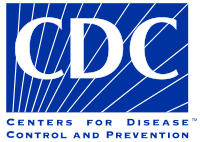
Photo from wikipedia
Abstract BACKGROUND Insecticide resistance is the major threat to vector control and for the prevention of vector‐borne diseases. Because almost all insecticides used against insect vectors are or have been… Click to show full abstract
Abstract BACKGROUND Insecticide resistance is the major threat to vector control and for the prevention of vector‐borne diseases. Because almost all insecticides used against insect vectors are or have been used in agriculture, a connection between agricultural insecticide use and resistance in insect vectors has been hypothesized. However, it is challenging to find a causal link between past agricultural use of insecticides and current resistance in vector populations without historical data series. Here we investigated the relative contribution across time of agricultural and public‐health insecticide applications in selecting for diflubenzuron (DFB) resistance in Culex pipiens populations. Using DNA sequencing, we looked for DFB resistant mutations in current and historical mosquito samples, dating back to the 1980s–1990s, when DFB was used in agriculture but not yet in mosquito control. RESULTS In the samples collected before the introduction of DFB in vector control, we found the resistant mutation I1043M in rural regions but not any of the neighboring urban and natural areas, indicating that the selection pressure was derived by agriculture. However, after the introduction of DFB for vector control, the resistant mutations were found across all study areas showing that the initial selection from agriculture was further boosted by the selection pressure imposed by the mosquito control applications in the 2000s. CONCLUSIONS Our findings support a combined role of agricultural and public‐health use of insecticides in vector resistance across time and call for specific actions in integrated resistance management, including increased communication between agriculture and health practitioners. © 2022 The Authors. Pest Management Science published by John Wiley & Sons Ltd on behalf of Society of Chemical Industry.
Journal Title: Pest Management Science
Year Published: 2022
Link to full text (if available)
Share on Social Media: Sign Up to like & get
recommendations!